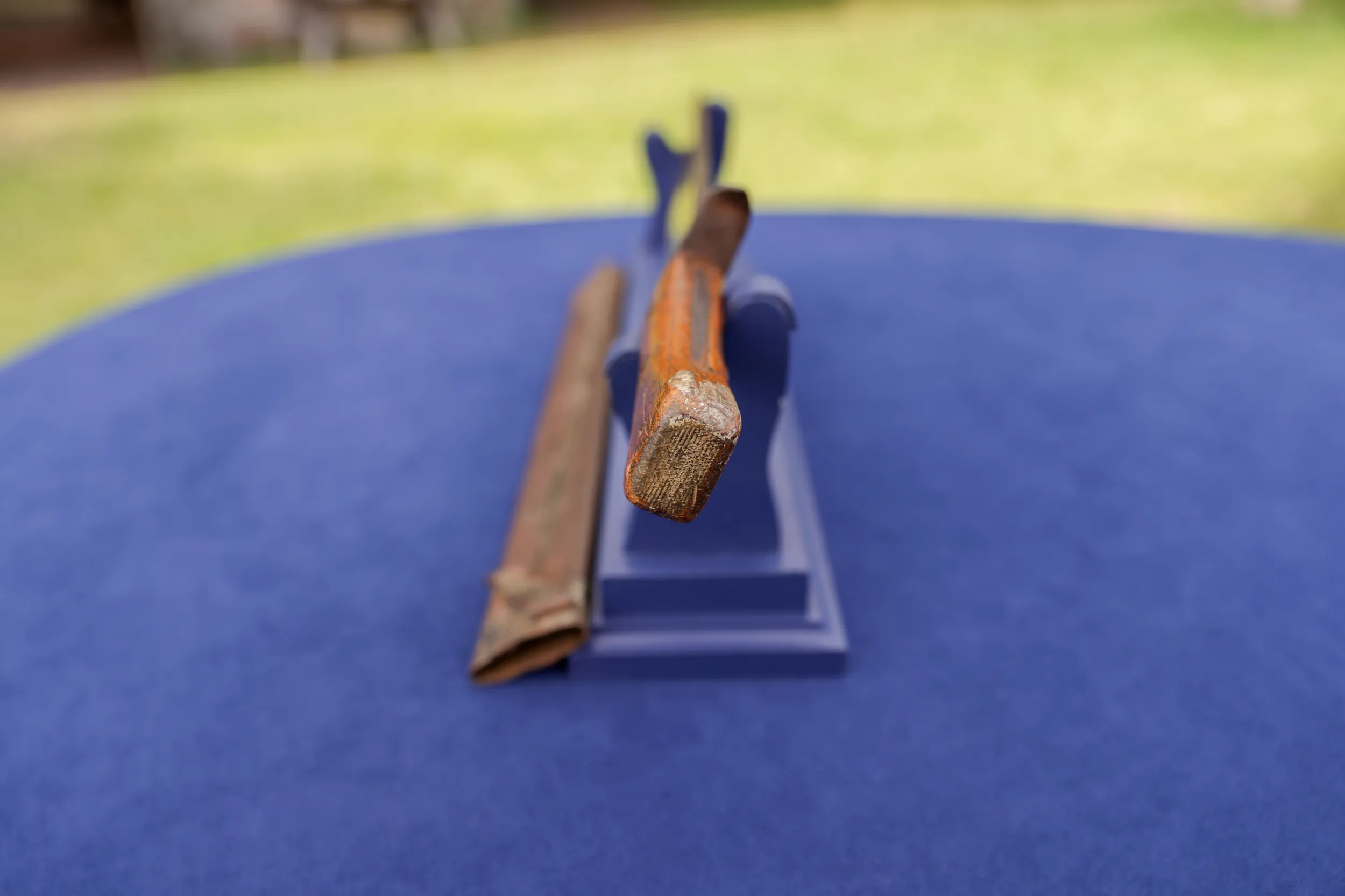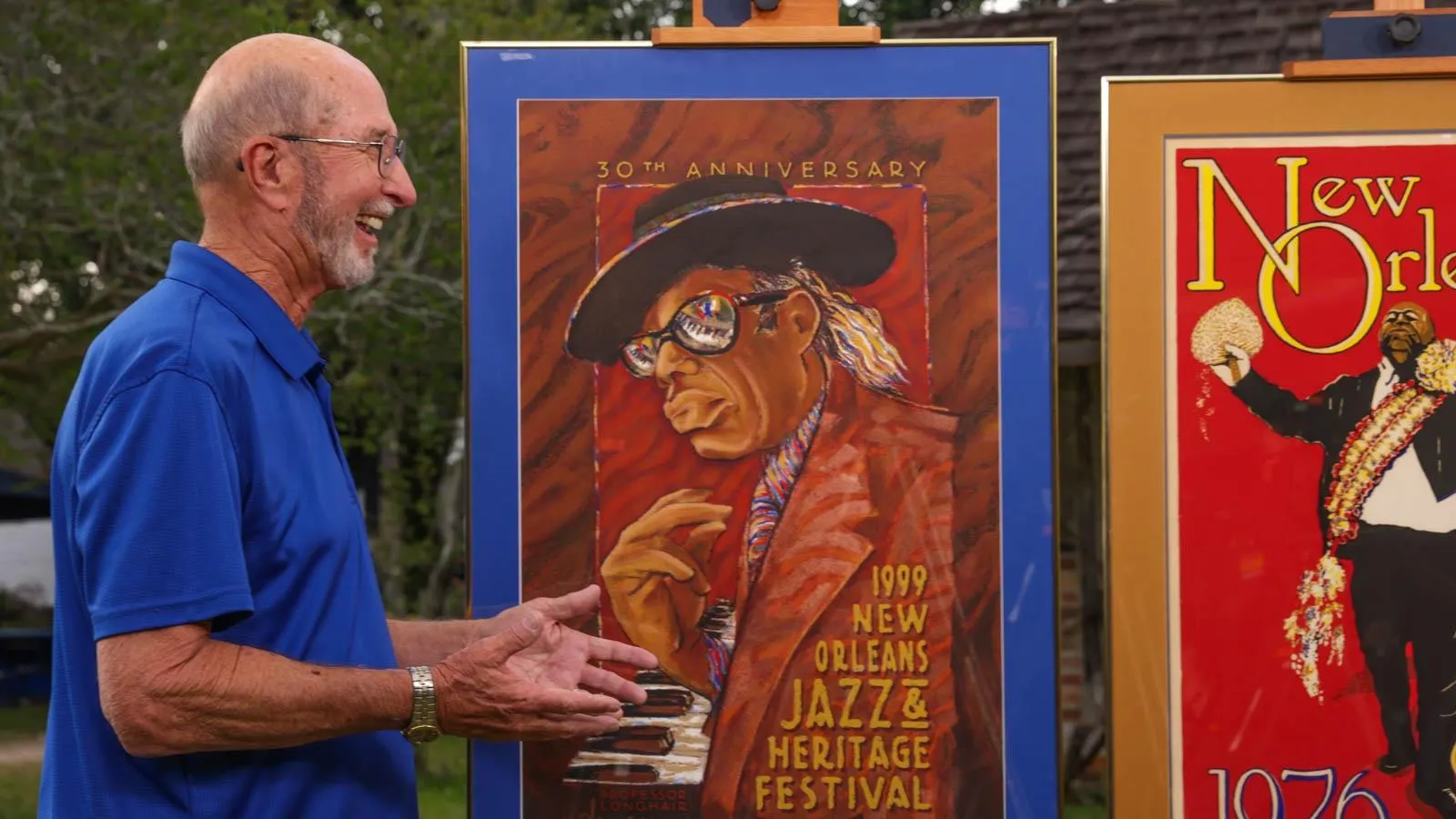GUEST: This sword has been a part of my family as long as I can remember. Um, the stories that I was told, it was from my great-great-grandfather Jerome, who was a part of the Civil War, and he was in the 96th. He was born in New Orleans and then migrated to Mobile, in Alabama, and became a part of the, the Army there. I think I've got it, maybe, the last ten years. And it's been sentimental to us because it w, it was part of Grandpa Jerome.
APPRAISER: What was his last name?
GUEST: Nicholas.
APPRAISER: Jerome Nicholas -- do you know any more about his history?
GUEST: So, the only thing that I know was, I saw a census from, I think, the 18, 1870 census, and it showed that he was 30 years old. So that's about the furthest back that I have, the information that I know of.
APPRAISER: Jerome Nicholas was a member of the USCT, United States Colored Troops. The 96th USCT was a Union unit, and they were an engineer unit. He enlisted in 1864...
GUEST: Okay.
APPRAISER: ...September, as a private.
GUEST: Okay.
APPRAISER: By November, he was promoted to corporal.
GUEST: Wow.
APPRAISER: And soon after that, he was promoted to first sergeant. So he moved up through the ranks pretty quickly.
GUEST: Okay.
APPRAISER: The 96th USCT that your ancestor was in was formed a, from a, a lot of enslaved men who, then, once they were freed, once the Army had come through, joined the Union Army.
GUEST: Okay.
APPRAISER: Um, they were commanded by white officers.
GUEST: Okay.
APPRAISER: Um, but your relative rose up from private to corporal to first sergeant pretty quickly. So, he had the skills to be an officer. Do you know what he did before the war?
GUEST: He was a barber by profession.
APPRAISER: Really.
GUEST: Yes.
APPRAISER: So he was a free man.
GUEST: He was a free man.
APPRAISER: He mustered out of service in New Orleans. In 1866, he was discharged from the service. And what you have here is what most collectors would call a Confederate bowie knife.
GUEST: Okay.
APPRAISER: Now, it has some standard features, some a little bit different than others. You got this false edge in the blade right here. And you have this half tang, which is kind of uncommon. It's a one-piece grip, as opposed to a two-piece grip. Um, you got this simple little counterguard, um, these great rivets, and the blade is fairly heavy, but at the same time, it's really nicely balanced, but it's fairly crude. And you also have this tinned iron scabbard, which is phenomenal that that still survives. It's got a little bit of black paint, or japanning, still left on it. The belt loop is on it. W, what makes this a Confederate, uh, bowie knife? And that's basically what collectors call them. It's a Southern thing...
GUEST: Yes.
APPRAISER: ...the way that they're made, fairly crudely, but they're big and bulky and look really mean.
GUEST: Okay.
APPRAISER: Now, how did he get it? There's a, quite a possibility that he picked it up while he was in service. Then he carried it and used it...
GUEST: Okay.
APPRAISER: ...and probably brought it home as a trophy.
GUEST: Yes.
APPRAISER: It's one of those things that, for us, kind of makes the hair stand up on the back of your neck.
GUEST: Mm-hmm.
APPRAISER: And for you to come out and tell his story is important.
GUEST: Okay.
APPRAISER: And we get more out there, more information on it. Conservatively, we would put an auction estimate of about $3,000 to $5,000.
GUEST: Okay.
APPRAISER: It could go up a little bit more than that with the story now that we have with it.
GUEST: Okay.
APPRAISER: For insurance, you might want to think about a $6,000-$8,000 insurance policy on it.
GUEST: Okay, interesting.
APPRAISER: Thanks for bringing it in.
GUEST: Oh, thank you. Thank you for the information.









